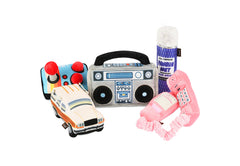They're cute, they're cuddly, they're ragingly popular on the internet. But no matter what the many, many memes tell you, it can be tough to figure out what exactly is on a cat's mind. Our fuzzy friends are often on the inscrutable side, and many owners either miss or misinterpret fairly obvious signals.
Doing so can lead to a heap of trouble, both for humans and cats. A guest approaching a nervous kitty without realizing it can easily wind up with a few claw marks. Cat owners who don't notice their pets' body language may be leaving them upset, hungry, or frightened – never good things.
This article is a quick crash course on the feline language. We'll have you understanding a few of the more obvious pieces of body language you're likely to see from your cat, and hopefully get you better prepared for life with your cuddly companion.
All in the Eyes
Who here hasn't been told to keep eye contact while shaking hands? Humans like eye contact – for us, it suggests intimacy, trust, and honesty. So much so that someone who doesn't meet your gaze often comes off as shifty and sly.
However, applying that logic to cats will do you few favors. Eye contact can make cats extremely uncomfortable. It's a classic cat lover mistake. If you and a cat have locked eyes, you're not communicating positive feelings to one another; even if you think eye contact feels friendly, the cat does not. Instead, he'll regard it as threatening behavior – he's watching you because you make him nervous, and he wants to monitor your movements.
So keep your eyes off the cat, he'll feel more comfortable. If you do make eye contact, a slow blink can signal friendly intentions. If you see one of these from a cat, he's letting you know that you seem trustworthy enough to not merit constant observation. Returning the favor tells him you feel the same way.
Rolling Over
Cat tummies are adorable. Unfortunately, they're generally not to be touched. If your kitty rolls over and displays her stomach, she probably feels pretty relaxed. A cat's belly is among its most exposed body parts, and letting it out into the open means that she's not worried about any attacks.
Imagine you're out sunbathing. You're sleepy, and maybe even have your eyes closed. Suddenly, your friend walks over and slaps your shoulder. It's a friendly gesture, but you're probably not going to be pleased about having your quiet time interrupted. That's more or less how your cat feels if you decide to pet her tummy.
If anything, it's even more shocking for her. You've basically poked her where and when she's most vulnerable, and she won't like it. Don't be shocked if she decides to thank you by biting or kicking up with her hind claws. It's a different story if you know your cat fits into the minority that actually enjoys belly rubs, but otherwise, be courteous: let sleeping cats lie.
The Tail's Tale
The tail is among the most expressive parts of a cat. It's long, visible, and highly mobile, and your pet will often use it to signal his mood. Most cats will anyway. Short-tailed breeds like Pixie Bobs obviously require some extra interpretation, and the same goes for some Scottish Folds, who can suffer from tail inflexibility (from Scottish Fold Love)
If your cat's tail is held straight up and down, he's likely feeling pretty happy. You'll often see this posture when he's already being affectionate and rubbing around your ankles. In any event, it's a good sign.
However, tails can be unhappy or angry. A lowered tail usually means that the cat is trying to remain inconspicuous. Maybe he's out on the prowl, or maybe he's just not in the mood for company. A quickly flicking tail often expresses agitation; if you notice the end of your cats tail really whipping around while you're petting him, it's probably time to switch things up.
Personal Language
It's important to remember that while the above are largely applicable to all cats, each pet will have their own particular vocabulary. Use these tips as guidelines, and learn your kitty's peculiarities. It's this mix that really lets you get inside your cat's head.





